آخرین مطالب
آقای محمد رضا نظری (عدسی های جذبی)

عدسی های جذبی
کارشناس ارشد اپتومتری و عضو دپارتمان اپتومتری دانشگاه علوم پزشکی شهید بهشتی
تجویز عدسی های جذبی در افراد نرمال به منظور حفاظت از چشم در برابر خطراتی مانند اشعه های مضر یا اجسام خارجی بکار می رود. در ضمن کاربرد دیگر آنها جلوگیری از خستگی چشم و درک درخشندگی آزار دهنده و افزایش کیفیت بینایی می باشد.
از جمله کاربردهای این عدسی ها در جوامع مختلف صنعتی می باشد که متناسب با آن شغل، فیلترهای تخصصی توصیه و تجویز می شود.
انواع فیلترهای رنگی در شغل ها، تفریحات و ورزشهای مختلف کاربرد اختصاصی دارند و از جمله مشخصه آنها، میزان جذب اشعه های مضر و میزان عبور نور مرئی در مکان های مختلف است.
از آنجا که عموم مردم به استفاده از عینک های آفتابی گرایش دارند به انواع فیلترهای عینک های آفتابی با درجات مختلف تیرگی و میزان عبور نور مرئی و کاربرد آنها در محیط ها و شغل های مختلف، مخصوصا رانندگی اشاره می شود.
از جمله عدسی های جذبی که ممکن است همراه با قدرت دیوپتریک تجویز شود، عدسی های فوتوکرومیک است که به منظور جلوگیری از آسیب به قسمت های مختلف چشم با مشخصه هایی مانند میزان عبور نور مرئی و جذب اشعه های مضر و مقدار تیرگی در محیط های مختلف با رنگ های متفاوت توصیه می شود.
یکی از جدیدترین عدسی های فوتوکرومیک بنام Transition Extra Active می باشد که در افرادی که شغل فعال داشته و حساسیت به نور دارند کاربرد دارد.
البته ناگفته نماند انواع عدسی های جذبی دیگری مانند جاذب اشعه مادون قرمز وجود دارند که شایسته است در مجال دیگری به آنها بپردازیم.

آقای محمد رضا نظری (پریزم افتالمیک)

پریزم افتالمیک
کارشناس ارشد اپتومتری و عضو دپارتمان اپتومتری دانشگاه علوم پزشکی شهید بهشتی
یکی از انواع عدسیهایی که پس از معاینات چشم، تجویز و یا برای تمرین ارتوپتیک استفاده میشود، پریزم افتالمیک است.
خاصیت پریزم جابجایی پرتو نور برخوردی به سمت قاعده آن است. از این خاصیت در معاینات تشخیصی، درمانی وکلینیکی استفاده میشود و در:
-اصلاح انحرافات چشمی
- تمرینات ارتوپتیک
- زیبایی ظاهرچشم از نگاه دیگران
کاربرد دارد.
پریزم در تجهیزات چشم پزشکی و اپتومتری مانند کراتومتر، تونومتر، میکروسکوپ، پریزم بار وفوروپتر استفاده میشود.
دراین ارائه به خصوصیات فیزیکی، واحد و تعریف پریزم اشاره شده است.
ارزیابی پریزم با روشهای لنزومتری و با استفاده از قسمتی بنام Prism compensator انجام میشود که مقدار ، جهت و زاویه قرارگیری آن را تعیین میکند..
روشهای ایجاد پریزم در عینک:
1- سفارش ایجاد پریزم در عدسی.
2- استفاده از اثر منشوری عدسیها با استفاده از قانون پرینتیس
3- استفاده از منشور فرنل
از مزایای منشور فرنل ضخامت کمتر و جاگذاری آسانتر آن است

آقای محمدرضا یارقلی(THE ROLE OF OPTOMETRY IN FREEFORM RX OPHTHALMIC LENSDESIGN)
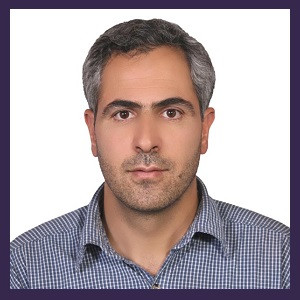
THE ROLE OF OPTOMETRY IN FREEFORM RX OPHTHALMIC LENSDESIGN
Background and Aim: Evaluation of Visual behaviors in emmetropic or ametropic cases is one of the effective and important researches in field of optometry. Production of ophthalmic lenses have some basic steps as below: 1- Material 2- Design 3- Production procedure 4- Coating 5- Quality control The idea leading to a final product which the patient is supposed to wear has a high value but challenging this idea has even more importance. Designers are considering optometry at all levels to create their designs. That’s why the companies which create them must have optometrists within their staff. With optometry knowledge we can understand better how a design works and how it is created. Also when you explain a design you use optometry to do so. We can’t forget that a design is used to produce a lens which will help somebody to see. Lenses are a tool of optometry, so designs are too. The software used to create a freeform design has into account a ray tracing based on the prescription of the user, its visual fields and in some cases, the parameters of the position of wear. Designers look for the visual preferences of the user in order to achieve the maximum comfort. All optometry data is used to create a free form design. Finally, every design created needs to be checked by optometrists in a clinical test with real users. Free form designs must use optometry even when they are already created. Optometry validates them by applying a clinical test, which will tell the free form design software companies if their design has a satisfying visual experience to the user or not. The visual experience is very important for free form designers, so does the optometry studies. Therefore, the role of optometry in free form designs is vital
Mohammad Reza Yarigholi1 *, Reza Naseh2
- CEO of BinaTeb Optic
- CEO of Adel Lens

آﻗﺎي دکتر جواد ﻫﺮوﯾﺎن ﺷﺎﻧﺪﯾﺰ(Low Vision Prescription in Retinal Disease)

Low Vision Prescription in Retinal Disease
Prof. of Optometry,Department of Optometry,Faculty of Paramedical Science, Mashhad University of Medical Sciences
Most epidemiological data shows the population of aged people with visual impairment is increasing. Depression is a common reaction seen within low vision patients. Those people who still have remaining vision feel more depressed since they always feel afraid that they may lose their vision totally. Family and social support have important role to decrease levels of depression in low vision patients.
Low vision according to quantity and quality is defined. Other definitions based on quality of life, employment and social welfare law is also given. Then clinical management of the range of conditions such as age related macular degeneration (AMD), retinitis pigmentosa (RP), diabetic retinopathy, glaucoma , cataract, and some retinal disease that cause visual impairment are explained. Symptoms and management of two type of AMD a ‘dry’ or ‘atrophic’ form and an exudative or ‘wet’ form has been explained. Visual rehabilitation and low vision aids for AMD patients can improve dramatically once they begin to focus attention on the degree of useful vision retained rather than the vision lost. For patient with both AMD and cataract, the Implantable Miniature Telescope (IMT) is a useful tool. The most difficulty of patient with glaucoma is mobility and driving due to oblivious to field loss.
In fact low vision management and use of aids in these people depends on age-related diseases. Some of them often do very well with hand magnifiers and illuminated stand magnifiers. For some people CCTV is valuable, which different types of them has been considered .It is important to measure refractive error and test distance and/or reading glasses because they often improve vision significantly. For people with particular age-related degeneration use of low vision aids may be invaluable. It should be noted that most low vision patients
cope well with their situation, particularly when the optometrist and practitioner give optimistic and best solution. Finally important factors in success for low vision people include family and social support and the patient’s general health and motivation.

خانم راحله مروج(CONTRAST SENSITIVITY TESTS IN CLINICAL PRACTICE)
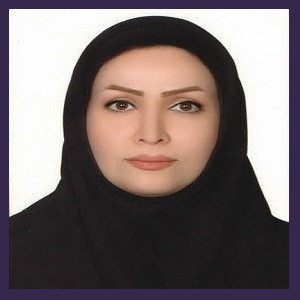
CONTRAST SENSITIVITY TESTS IN CLINICAL PRACTICE
Iran University of Medical Sciences
Abstract: Practitioners and optometrists frequently make clinical decisions based on changes in visual acuity. However, acuity is recognized to be only one aspect of visual performance. In recent years, a number of clinical chart‐based tests which measure different aspects of vision based on contrast sensitivity have become available. These tests allow a more subtle investigation of visual problems. In this presentation of currently available contrast sensitivity charts and contrast letter charts, we examine their clinical application and some of the problems which may be encountered in the use of these tests in practice.

خانم مژگان پاک بین(SAFE CRITERIA IN PATIENT SELECTION FOR REFRACTIVE SURGERY)
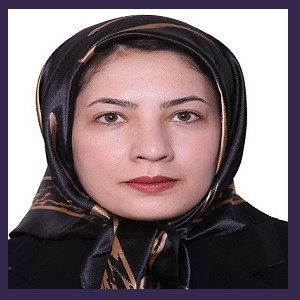
SAFE CRITERIA IN PATIENT SELECTION FOR REFRACTIVE SURGERY
PhD Candidate in Ophthalmic Research. Noor Research Center for Ophthalmic Epidemiology, Tehran University of Medical Sciences, Tehran, Iran
Abstract: Laser refractive surgery is one of the most performed surgical procedures to correct refractive errors in the world. Although refractive surgery is generally safe and effective, it does carry some risks. Careful patient selection can avoid most complications and improve the patients’ postoperative visual quality. To achieve acceptable results, patients should be at least 18 years of age and have a stable refractive error for one year’s duration. Refractive error ranges are Myopia ≤ -8.00 D, astigmatism ≤ -4.00 D (the amount of astigmatism and the axis should be noticed), hyperopia ≤ + 5.00 D (latent hyperopia and age should be considered). Essentially any disease that interferes with normal epithelial and stromal healing is a contraindication. These include severe dry eyes, connective-tissue diseases, active or residual corneal disease like keratoconus, herpetic keratitis, corneal dystrophy or degeneration. Cataract, glaucoma, blepharitis and uveitis are also contraindicated. medical contraindications are diabetic mellitus, history of keloids, pregnancy, autoimmune disease. Corneal Topographic risk factors include: Simulated keratometry (SimK) > 48.00 D, simK difference between two eyes > 1.00 D, asymmetric bowtie pattern, inferior superior (I-S) value > 1.4 D, skewed radial axis (SRAX) > 20 degree, KISA index > 60 %, surface asymmetry index (SAI) > 0.5, surface regularity index (SRI) > 0.56, Q value < -0.26, anterior elevation > + 12 µm, posterior elevation > + 15 µm, corneal pachymetry < 500 µm, residual stromal bed (RSB) < 350 µm, pachymetry difference between two eyes > 30 µm. Patients need to be aware that the refractive procedure may not completely eliminate the need for nonsurgical refractive correction. Patients with unrealistic expectations, even if they meet all the criteria for the procedure, should still be advised against elective refractive surgery. Their social and career history and their reasons for surgery need to be assessed carefully

آقای سعید شاهپری(اصلاح اپتیکی پس از جراحی انکساری)

اصلاح اپتیکی پس از جراحی انکساری
کارشناس ارشد اپتومتری
مقدمه
با شیوع فراوان روشهای جراحی اصلاح انکساری در کشور ، آگاهی اپتومتریست ها بعنوان مراقبین اولیه سلامت چشم از روشهای جراحی انکساری ، دوره بهبودی و مدت زمان تثبیت وضعیت انکساری و همچنین روشهای اصلاح عیوب انکساری بازگشت کرده بوسیله عینک و یا لنزتماسی اهمیت زیادی پیدا کرده است .
روش
در این مقاله سعی شده است که با استفاده از کتابهای مرجع ارزشمند بوریش کلینیکال رفرکشن ، افرون کانتکت لنز و امریکن آکادمی آو افتالمولوژی مطالب مفیدی در مورد انواع مختلف جراحی های انکساری و دوره بهبودی وتثبیت هر یک از آنها و همچنین روش های اصلاح با لنزهای تماسی و یا عینک ، ارائه گردد .
نتیجه
بسیاری از کسانیکه جراحی انکساری را انتخاب کرده اند بدلایلی مانند اندر کارکشن ، اورکارکشن یا رگرشن و یا پیرچشمی پس از حدود 2 تا 10 سال مجبور به استفاده مجدد از عینک یا لنز تماسی شده اند ، چون بسیاری از این افراد تمایل زیادی برای استفاده از عینک ندارند، افزایش مهارت و دانش اپتومتریست ها در فیت لنز تماسی برای آنها بسیار ضروری به نظر میرسد .

آقای محمد خجسته(مبانی تشخیص پریمتری)

مبانی تشخیص پریمتری
در تعریف میدان بینایی می توان این گونه بیان کرد که وقتی ما به یک نقطه ثابت متمرکز می شویم در صورت سلامت بینایی آن نقطه را کاملا واضح می بینیم و در همان لحظه میتوانیم مناطقی از پیرامون آن نقطه را البته نه چندان روشن ببینیم.
میدان دید دو چشمی حدود ۱۸۰ الی ۲۰۰ درجه، تک چشمی ۱۴۰ الی ۱۶۰ درجه که حدود ۱۲۰ درجه میدان مشترک (همپوشانی) دارد و میدان دید هرچشم در سمت مقابل با توجه به آناتومی صورت و بینی حدود ۶۰ درجه است.
امروز برای اندازه گیری این فضا که در اثر بیماریهای چشمی نظیر گلوکوم،شب کوری،استرابیسمیک آمبلپویی، بیماری عصبی مغزی نظیر ضربه ها ، تومورهای مغزی و انسداد عروق مغزی و مصرف داروهای ضد روماتیسمی دچار نقصان میشود از روشها و دستگاههای مختلفی استفاده می شود که در حال حاضر چون از متد کامپیوتری با دستگاه ها مفری بیشتر استفاده میشود ما به شرح و تفسیر آن میپردازیم هر چند که امروزه OCT جایگاه ویژه ای دارد.
قبل از درخواست پریمتری به نکات زیر بایستی توجه شود:
ضرورت انجام پریمتری ، توانایی بیمار در انجام تست ، میزان حدت بینایی و غیره .
تست باید با تصحیح کامل عیب انکساری انجام شود و از قطره های میدریاتیک یا میوتیک استفاده نکرده باشد(حداقل ۴۸ ساعت قبل از تست) تست به دو صورت غربالگری و Threshold انجام میشود.
تفسیر تست باید با توجه به معیارهای قابل اعتماد:
سایز مردمک , FP , FN , FL , Fixation monitor, P Vlaue , Total Deviation, Pattern Deviation, GHT, MD, PSD انجام می شود.
این تست در تشخیص بیماری، اتخاذ پروتکل درمان و پیگیری تاثیرپذیری درمان کاربرد دارد.
هدف اصلی از این مقاله، افزایش توانایی اپتومتریست در تفسیر نتایج پریمتری در جهت ارائه خدمات سلامت بینایی است.

آﻗﺎي ﺗﻘﯽ ﻧﻘﺪي(مبانی کاربردی محاسبه لنزهای داخل چشمی)

مبانی کاربردی محاسبه لنزهای داخل چشمی
- MSc, Department of Optometry, School of Rehabilitation Sciences, Iran University of Medical Sciences, Tehran, Iran
Abstract: هر ساله عمل کاتاراکت به عنوان شایع ترین عمل داخل چشمی غالبا در افراد مسن انجام می گردد. در این عمل به طور کلی کریستالین لنز طبیعی چشم طی عمل خارج و با لنز داخل چشمی مصنوعی جایگزین می گردد. مهمترین تست پاراکلینیکی قبل از عمل کاتاراکت تعیین قدرت اپتیکی لنز داخل چشمی می باشد و برای تعیین دقیق قدرت لنز داخل چشمی به منظور دستیابی به بهترین کیفیت اپتیکی برای بیمار نیاز به ارزیابی پارامترهای مختلف چشمی است که اصطلاحا طی عمل بیومتری با دستگاه های مختلف اپتیکی و ... انجام می گردد. آگاهی از شرایط کلی فعلی چشم بیمار؛ نوع عیوب انکساری فعلی بیمار؛ بیماری های سطحی قرنیه؛ اقدامات جراحی قبلی انجام شده برای بیمار؛ نوع متد کارگذاری لنز داخل چشمی براساس پلن جراح و ... مواردی است که برای دستیابی به بهترین نتیجه اپتیکی بعد از عمل ضروری می باشد. در این ارائه سعی خواهد شد با توجه به روش ها و دستگاه های مختلف بیومتری و فرمول های مختلف محاسبه پاور لنز های داخل چشمی؛ مهمترین مبانی علمی و عملی محاسبه لنزهای داخل چشمی بیان گردد.

خانم اعظم علوانی(MICROSCOPIC IMAGING OF CORNEA)
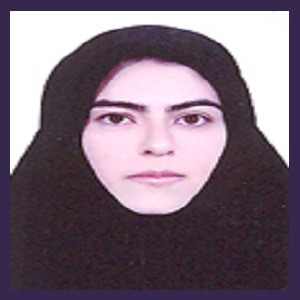
MICROSCOPIC IMAGING OF CORNEA
Noor Ophthalmology Research Center, Noor Eye Hospital, Tehran, Iran.
Abstract: Corneal confocal microscopy is a powerful clinical technique for examining the corneal cellular structures. It provides images which are comparable to the results of in-vitro histochemical techniques characterizing corneal epithelium, Bowman’s layer, stroma, Descemet’s membrane, endothelium, and the corneal neural network. Because corneal confocal microscopy is a non invasive technique for in vivo assessment of the living cornea, it has an enormous clinical potential to investigate various corneal diseases. For example it has been used to diagnose and assessment of corneal dystrophies, corneal ectasia, and infectious conditions, for monitoring the contact lens induced corneal changes, and to evaluate post refractive surgery (PRK, LASIK, LASEK, Radial Keratotomy) and post penetrating keratoplasty alterations. The purpose of this manuscript is to describe the principles of corneal confocal microscopy, and its applications, and clinical use in different ocular and systemic diseases.

آﻗﺎي علی ﻣﺮادي(ﻣﺤﺎﺳﺒﻪ ﻟﻨﺰﻫﺎي داﺧﻞ ﭼﺸﻤﯽ در آﺳﺘﯿﮕﻤﺎت ﻧﺎﻣﻨﻈﻢ)
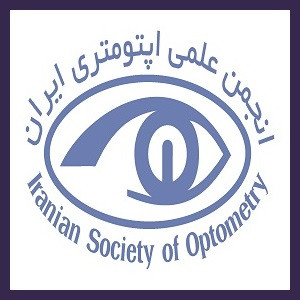
ﻣﺤﺎﺳﺒﻪ ﻟﻨﺰﻫﺎي داﺧﻞ ﭼﺸﻤﯽ در آﺳﺘﯿﮕﻤﺎت ﻧﺎﻣﻨﻈﻢ
The refractive power of the human eye depends on the power of the cornea and the lens. Cornea one of the Important parts of IOL Calculation to achievement of true IOL Power and patient satisfaction
Manual Keratometry and Placido based corneal topography are the most frequently used methods in Measurement the corneal power for calculation of intraocular lens (IOL) power. Although both instruments have proved to be fairly accurate in determining the refractive power of regular and unoperated corneas, they have limitations in measuring corneas that have irregular astigmatism and in corneas that have had refractive surgery.
With keratometry or topography the cornea is not regular or symmetrical in some areas
Common Causes: Irregular Cornea
Keratoconus • Contact lens-induced corneal warpage • Corneal transplants (Post-penetrating keratoplasty) • Post refractive surgery • Pellucid marginal degeneration • dystrophy, trauma
Corneal Pterygium, Previous Keratorefractive surgery Like Radial Keratotomy and corneal scarring. That's are challenging in true measurement of corneal power for IOL Power calculation.
One of the common corneal irregularity sources is Keratoconus, Keratoconus (KCN) is bilateral corneal ectasia characterized by progressive thinning and conical protrusion of the cornea. IOL power calculation in KCN patients unpredictable and the most challenging part of preoperative considerations. calculating an accurate IOL power, it is imperative to precisely determine K and AL readings regardless of which calculation formula is used.

آﻗﺎي فرشید ﮐﺮﯾﻤﯽ(انتخاب پروتکل مناسب در پریمتری)

انتخاب پروتکل مناسب در پریمتری
اپتومتریست، کارشناس ارشد اپتومتری، دانشگاه علوم پزشکی مشهد
در مورد میدانبینایی دانشمندان نامآور و گمنامی به تحقیق و پژوهش پرداختند که بسیاری از آنها به دلیل عدم ثبت نتایج و یافتههایشان گمنام ماندند. گذر زمان اندیشهها را نیز درهم نوردید و گامهای نخست به گامهای پرشتاب و امید بخشتر سالهای پسینیتر منجر شد. اگر شناخت میداندید و تعیین مرزهای آن و تعریف برخی از کاستی را به صورت کیفی گام نخست و ارزیابیهای کمی را گام دوم بدانیم به کارگیری ابزارهای تشخیصی برای بررسی میداندید گام سوم و با اهمیتی است که برداشته شده است. تلاشهایی از این دست به بار نشست و ارزش میدانبینایی را برای بسیاری مشخص کرد؛ پس از این مرحله پژوهشگران فراوانی اراده و توان خود را برای گسترش دانش در این زمینه به کار گرفتند.
برای افرادی که تازه کار هستند یکی از گنگکنندهترین جنبههای ارزیابی میدان بینایی فراوانی روشهای ارزیابی میباشد. آیا واقعاً همه این برنامهها برای ارزیابی میدانبینایی ضروریاند؟ آیا جامعه پریمتری نمیتواند در مورد آنکه کدام بهتر است تصمیمگیری کرده و بر اساس آن کار کند؟ پاسخ این سوالات خیر میباشد. برنامههای مختلف ارزیابی میدان ضروریاند چون که اهداف ارزیابی میدانبینایی از یک روش به روش دیگر متفاوت میباشد. آنچه که ممکن است برای یک وضعیت، برنامه ایده آلی باشد همین برنامه میتواند برای یک موقعیت دیگر نامناسب باشد. برای مثال، یک نرولوژیست یک بیمار مشکوک به تومورغده هیپوفیز را ارزیابی میکند نیازهای این نورلوژیست خیلی متمایزتر از یک پریمتریست میباشد که قصد دارد به طور سریع بیمار خود را ارزیابی کند که آیا نقص چشمگیری درمیدانبینایی دارد یا خیر؟ برنامههای ارزیابی مختلف میدانبینایی برای اهداف مختلفی طراحی شده اند؛ واضح است که برخی از برنامهها مثل برنامه فوق آستانه، مزایای آن در طول یک دوره طولانی استفاده میشود. در این مقاله برآنیم تا به بررسی جدیدترین منابع علمی و با تکیه بر تجربیات بالینی به تفهیم بهتر انتخاب پروتکل مناسب در پریمتری بپردازیم.
